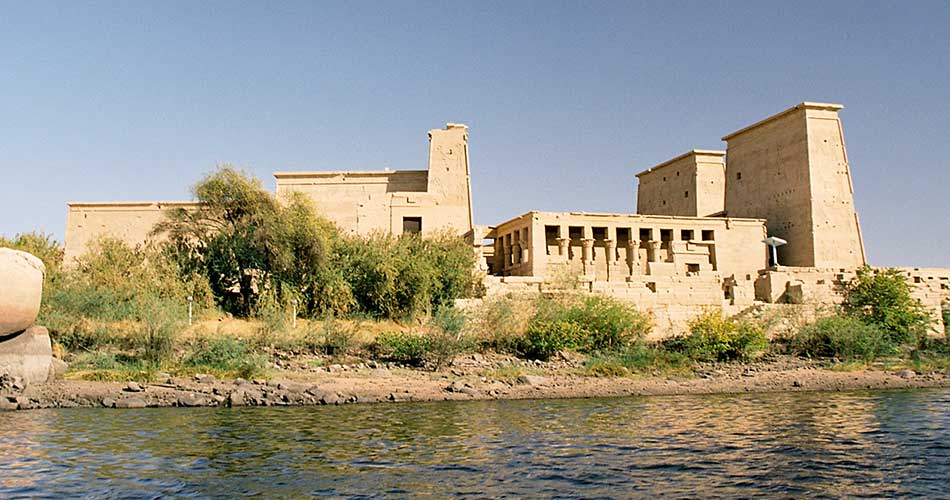The Philae Temple is an ancient Egyptian temple complex0
Philae Temple located on an island in the Nile River, just south of the city of Aswan.
The temple complex was originally built during the Ptolemaic dynasty between 380 BC and 362 BC, and it was dedicated to the goddess Isis. The temple played an important role in the ancient Egyptian religion and was a center of worship for the goddess Isis, who was believed to have magical powers and was worshipped as the mother of all pharaohs.
The Philae Temple is known for its beautiful location, stunning architecture, and intricate carvings and inscriptions. The temple complex consists of several buildings and structures, including the main temple, a smaller temple dedicated to the goddess Hathor, and several shrines and sanctuaries. The main temple is entered through two large pylons, or monumental gateways, which are decorated with intricate carvings and hieroglyphics. Beyond the pylons, visitors enter a large courtyard, which is surrounded by columns and decorated with beautiful carvings and reliefs.
The main sanctuary of the Philae Temple is dedicated to the goddess Isis and contains a statue of the goddess, which was believed to embody her spirit and power. The statue was treated with great reverence by the ancient Egyptians, who believed that it had the power to grant wishes and perform miracles. The temple also contains a smaller temple dedicated to the goddess Hathor, which is located on the southern side of the island and is connected to the main temple by a causeway.
In addition to its religious significance, the Philae Temple has a rich history that spans over a thousand years. The temple was an important center of worship during the Roman period, when the worship of Isis spread throughout the Roman Empire. The temple was eventually abandoned in the 6th century AD, when Christianity became the dominant religion in Egypt. The temple was rediscovered in the 19th century by archaeologists, who worked to restore and preserve the temple complex.
One of the biggest challenges facing the Philae Temple today is the rising waters of the Nile River. The construction of the Aswan High Dam in the 20th century caused the water level of the Nile River to rise, which threatened to submerge the temple and the island on which it stands. To save the temple, a massive effort was undertaken to relocate it to a nearby island that was not threatened by the rising waters. The temple was dismantled and moved piece by piece to the new location, where it was reconstructed and restored to its former glory.
Today, the Philae Temple is a popular destination for tourists visiting Egypt. The temple’s stunning location on an island in the Nile River, its impressive architecture and intricate carvings, and its rich history and cultural significance make it a must-see destination for anyone interested in ancient Egyptian history and culture. Visitors can explore the temple complex, marvel at its beauty and grandeur, and learn about the beliefs and practices of ancient Egyptians, making it a truly unforgettable experience.
There are many interesting and intricate carvings and reliefs at the Philae Temple, but here are a few notable examples:
1. The carvings on the two pylons at the entrance of the temple are particularly impressive. They depict scenes from the life of the goddess Isis, as well as images of various gods and goddesses.
2. The outer walls of the temple are decorated with scenes from the lives of the pharaohs, including depictions of battles, hunting, and religious ceremonies.
3. The inner walls of the temple are covered with hieroglyphics and carvings that tell the story of the goddess Isis and her husband Osiris. These carvings depict their mythological battles against evil forces and their triumph over death and darkness.
4. The temple’s main sanctuary contains a statue of the goddess Isis, which is carved from black granite. The statue is over 2 meters tall and is exquisitely detailed, with intricate headdresses and jewelry.
5. The Hathor Temple, which is connected to the main temple by a causeway, contains beautiful carvings and reliefs that depict scenes from the life of Hathor, the goddess of love, beauty, and music.
Overall, the carvings and reliefs at the Philae Temple are a testament to the skill and artistry of the ancient Egyptian craftsmen and provide a fascinating glimpse into the beliefs and practices of this ancient civilization.



